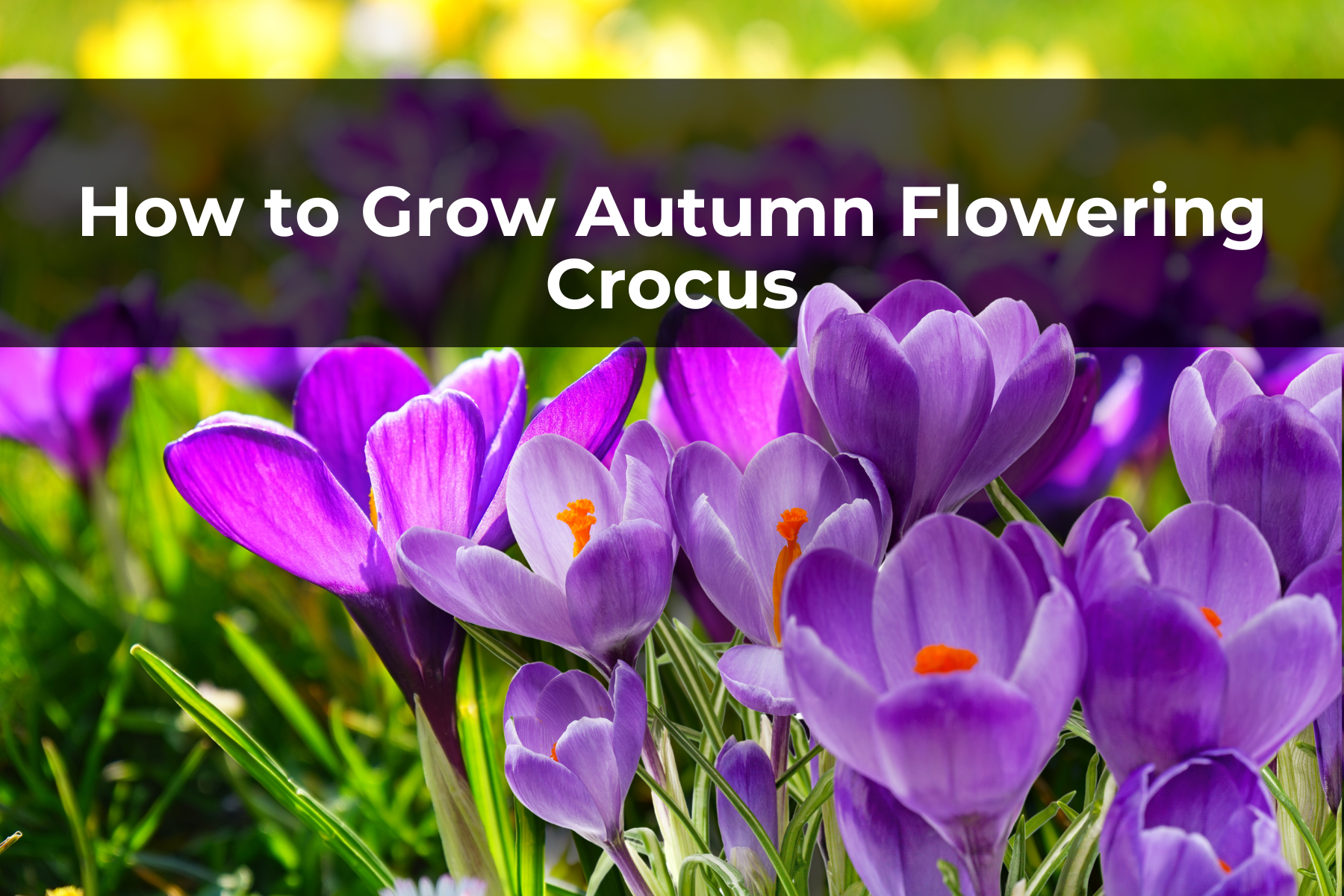Last Updated on April 15, 2024 by Real Men Sow
The Autumn Flowering Crocus is a late season delight in the garden. While most gardeners are familiar with spring crocus, the fall variety offers bright, white, purple, and pink cup-shaped blooms at a time when other flowers have passed. To add color to rock gardens and perennial borders or under flowering trees, grow fall-flowering Crocus.
How to Grow Autumn Flowering Crocus
Growth Habit
You can divide the fall Flowering Crocus into two. The saffron Crocus has bulbs, plants, and flowers that are the same size as the spring flowering crocus. In autumn, the first flowers appear, and later in the fall, leaves that look like grass appear.
Colchicums are the larger-sized fall flowering Crocus. The variety of colchicums will bloom between September and November. They produce large, goblet-like flowers that can reach 6 inches in height without any leaves. They also produce large leaves in spring.
Spacing
Place small varieties of Autumn Flowering Crocus bulbs (corms), 3 inches apart. Place larger varieties 6-10 inches apart. Both look great when planted in masses.
Planting Autumn Flowering Crocus
In late summer or early autumn, plant this Flowering Crocus bulbs.
General Care Guide for Autumn Flowering Crocus
Watering Autumn Flowering Crocus
Only water the Flowering Crocus if the soil dries out after planting them in late summer. Avoid watering them while they are flowering. After flowering, keep the soil moist until the ground freezes. In spring, water again until they go dormant.
Light
The best time to enjoy the Flowering Crocus is in full sunlight. Lower-growing varieties, like the edible saffron, can flower in partial shade but only to a lesser extent. Although the colchicum autumn crocus is taller, it will only flower in partial sunlight. However, they can become floppy.
Soil
Autumn Flowering Crocus is best in well-drained soil. Avoid clay soils and those that drain poorly. This soil will cause bulbs (or corms) to rot. To improve water drainage, amend the soil with peat moss, sand, or compost. The pH of fall crocus is between neutral and slightly alkaline, so if a soil test shows that you need to, you can add lime.
Staking
The low-growing Autumn Flowering Crocus does not require any stakes. Part-shade Colchicums can be supported with a low cage to prevent the stalks from becoming floppy.
Fertilizing
Add compost to the soil before planting. You can use bone meal or organic high-phosphorus fertilizer to stimulate bulb growth and flowering. To the planting area, add a layer of compost about 1 to 2 inches thick and a small amount of granular bulb fertilizer.
Mulching
Mulch the Flowering Crocus in late summer with a 1-inch to 2-inch-thick layer of shredded bark mulch or chopped leaves. Mulch will preserve soil moisture, stop weed growth, and keep the soil from splashing onto the delicate fall crocus flower. To prevent the soil from getting too wet in winter, remove the mulch immediately after flowering. To protect bulbs from freezing temperatures in cold regions, keep the mulch on during fall and winter.
Trimming & Pruning Autumn Flowering Crocus
Leave the flowers to naturally fade in autumn. Depending on which type of Flowering Crocus bulbs are being grown, the leaves should be allowed to be naturally yellow and die in autumn or spring depending on what they are. The leaves rejuvenate the bulbs.
How to Divide and Transplant Autumn Flowering Crocus
Each year, new corms form on top of old ones. This allows clumps for growth. Crocus and Colchicum are both very long-lived plants that can be divided regularly.
The Flowering Crocus bulb will slowly expand, and you can divide them after three to four years to make more bulbs. Small bulblets will develop around the edges of the mother bulb. When the bulb is still dormant in summer, remove the bulb clumps and separate the bulblets. Replant the bulb in an area with similar growing conditions. It will take approximately 1 to 2 years for the bulblets to reach maturity.
Pests and Diseases of Autumn Flowering Crocus
The bulbs and flowers of the Autumn Flowering Crocus are not immune to some pests.
- Rabbits love to eat foliage and flowers. Keep them out using a low fence and repellent sprays.
- In fall and winter, mice and voles will dig underground and eat the bulbs (corms). To make the hole more attractive, you can add some oyster shells, crushed seashells, and eggshells. This will stop them from tunneling to the bulbs. You may also use castor oil to repel them.
- The foliage will be eaten by snails and slugs, especially in spring when large flowers are available. To make it easier for the slugs to hide, remove the mulch from the leaves in spring. You can also place iron phosphate or other organic baits around the area.
- Fusarium and fungal rot can cause bulb damage. To prevent these diseases, keep the soil well-drained. These diseases can be avoided by dividing the bulbs and moving them after four years.

